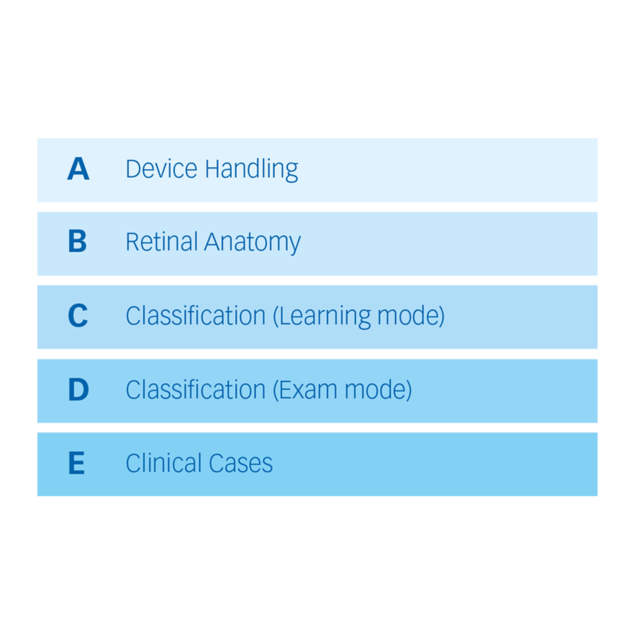The Retinal Anatomy course offers an introduction of the basic anatomy of the posterior segment. In the first case, trainees learn to identify the anatomical features of a premature retina, their location and the relative distance between them. In the second case, they use the relative distance to identify the retinal and vascularization zones necessary for ROP diagnosis.

